OP: “Cinderella” by Cidergirl
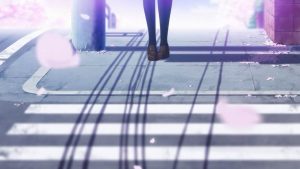 First, let me say that the ability of Netflix to kill English language discussion for any anime, no matter how much buzz it has, is astonishing. Komi-san wa Komyushou desu was easily in the top three most-anticipated shows of the season in the West, and probably the top non-sequel. Of course that’s true in Japan too – this is a manga that’s highly popular both at home and abroad. But because it premieres on Netflix Japan a week before it streams internationally, it loses much of its impact due to a split viewership. Some won’t wait for the streams (old-school anime fans are wired that way) but fansubs take a while now with streaming having largely killed off fansub groups. And there’s a whole generation of anime fans who know nothing of the old ways, and stream everything. And Blue Period is in the same boat…
First, let me say that the ability of Netflix to kill English language discussion for any anime, no matter how much buzz it has, is astonishing. Komi-san wa Komyushou desu was easily in the top three most-anticipated shows of the season in the West, and probably the top non-sequel. Of course that’s true in Japan too – this is a manga that’s highly popular both at home and abroad. But because it premieres on Netflix Japan a week before it streams internationally, it loses much of its impact due to a split viewership. Some won’t wait for the streams (old-school anime fans are wired that way) but fansubs take a while now with streaming having largely killed off fansub groups. And there’s a whole generation of anime fans who know nothing of the old ways, and stream everything. And Blue Period is in the same boat…
 Be that as it may, this is undeniably one of the most notable new anime of the year. The manga is indeed a big deal, and the series director here is Watanabe Ayumu, who’s deservedly become one of the titans of the industry. He’s listed as “Chief Director” here and one never knows how directly involved that person will be with day to day production, but Watanabe’s stylistic fingerprints are all over this premiere (and he loves his sakura). Koi wa Ameagari no You ni is the series that first springs to mind (writer Akao Deko also worked with Watanabe there) and heroine Komi even bears a striking resemblance to After the Rain’s Akira.
Be that as it may, this is undeniably one of the most notable new anime of the year. The manga is indeed a big deal, and the series director here is Watanabe Ayumu, who’s deservedly become one of the titans of the industry. He’s listed as “Chief Director” here and one never knows how directly involved that person will be with day to day production, but Watanabe’s stylistic fingerprints are all over this premiere (and he loves his sakura). Koi wa Ameagari no You ni is the series that first springs to mind (writer Akao Deko also worked with Watanabe there) and heroine Komi even bears a striking resemblance to After the Rain’s Akira.
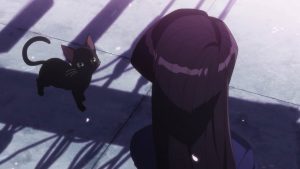 If Komi Can’t Communicate turns out to be anywhere near that good, I’ll be thrilled. It’s an odd little series, the story of the titular Komi Shouko-san (Koga Aoi, who doesn’t have much to do at this point). Though truth be told, the central narrative figure is actually Tadano Hitohito (Kajiwara Gakuto). He (for good reason) narrates the story, and acts more or less as an audience proxy as he takes in the much more unusual and striking Komi-san. If you see danger there story-wise, you aren’t wrong, though it’s too early to say if this series is good enough to avoid the inherent land mines.
If Komi Can’t Communicate turns out to be anywhere near that good, I’ll be thrilled. It’s an odd little series, the story of the titular Komi Shouko-san (Koga Aoi, who doesn’t have much to do at this point). Though truth be told, the central narrative figure is actually Tadano Hitohito (Kajiwara Gakuto). He (for good reason) narrates the story, and acts more or less as an audience proxy as he takes in the much more unusual and striking Komi-san. If you see danger there story-wise, you aren’t wrong, though it’s too early to say if this series is good enough to avoid the inherent land mines.
 Komi can’t communicate – the title at least is truth in advertising. At least verbally – she can write fine. She’s also a tall and gorgeous “madonna” who makes a huge impression on both the boys and girls (and teachers) just by her presence. The conceit here is that Tadano-kun is the first person to ever notice that she has a communication disorder (the literal meaning of “Komyushou”) so severe she can’t speak in the presence of strangers. That, frankly, strikes me as pretty ludicrous – there’s no way this girl got through middle school without speaking and no one thought that odd. I suppose one could interpret this is Komi simply misinterpreting things (as she tends to do) and that lots of people have noticed.
Komi can’t communicate – the title at least is truth in advertising. At least verbally – she can write fine. She’s also a tall and gorgeous “madonna” who makes a huge impression on both the boys and girls (and teachers) just by her presence. The conceit here is that Tadano-kun is the first person to ever notice that she has a communication disorder (the literal meaning of “Komyushou”) so severe she can’t speak in the presence of strangers. That, frankly, strikes me as pretty ludicrous – there’s no way this girl got through middle school without speaking and no one thought that odd. I suppose one could interpret this is Komi simply misinterpreting things (as she tends to do) and that lots of people have noticed.
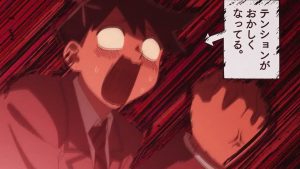 The other thing I’d ask is, why is this poor girl not seeing anyone professionally to help her? Can she speak normally at home and her parents don’t know, or do they ascribe to the too-common Japanese taboo against psychotherapy? I don’t know (and don’t want too, so hush) whether any of this gets addressed, but for now it all has an air of plot contrivance about it. It’s a necessary component to set up the premise that Tadano is an exceptionally good observer (he’s sort of not supposed to be exceptional about anything, but…) and the first one to reach out to Komi and become her friend.
The other thing I’d ask is, why is this poor girl not seeing anyone professionally to help her? Can she speak normally at home and her parents don’t know, or do they ascribe to the too-common Japanese taboo against psychotherapy? I don’t know (and don’t want too, so hush) whether any of this gets addressed, but for now it all has an air of plot contrivance about it. It’s a necessary component to set up the premise that Tadano is an exceptionally good observer (he’s sort of not supposed to be exceptional about anything, but…) and the first one to reach out to Komi and become her friend.
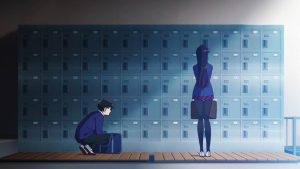 That’s all rather iffy to me, but once we get there things are generally pretty charming. I don’t see a lot of mean-spiritedness or snark in this premiere – neither Tadano or Komi are treated disrespectfully by the writing, and their interactions feel quite genuine. Tadano is in serious danger of being generic on paper, and while some viewers won’t care as that’s not what they’re here for, I think it’s pretty important for the protagonist not to be a simple proxy. But he’s a nice kid if nothing else, and Komi has a commanding screen presence to be sure. I’m not sure if the underlying conceit has legs (Komi certainly does) but the manga’s success indicates it does for a lot of people anyway.
That’s all rather iffy to me, but once we get there things are generally pretty charming. I don’t see a lot of mean-spiritedness or snark in this premiere – neither Tadano or Komi are treated disrespectfully by the writing, and their interactions feel quite genuine. Tadano is in serious danger of being generic on paper, and while some viewers won’t care as that’s not what they’re here for, I think it’s pretty important for the protagonist not to be a simple proxy. But he’s a nice kid if nothing else, and Komi has a commanding screen presence to be sure. I’m not sure if the underlying conceit has legs (Komi certainly does) but the manga’s success indicates it does for a lot of people anyway.
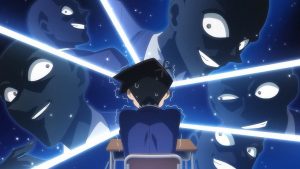 The visual style of the premiere is super-busy and cute to the point of being over the top, but from what I know of the manga that’s not something Watanabe could change – it’s intrinsic to the series’ identity. I definitely get the vibe that this is not an easy series to adapt – it’s not neat and tidy as a narrative package, but in Akao and Watanabe the anime certainly is in capable hands. Of the director Kawagoe Kazuki I confess I know very little, and his resume is thin, but he did direct the OP and it’s one of the best of the year. I’m nowhere close to figuring out where I stand with Komi-san wa Komyushou desu, but it’s certainly worth keeping very close tabs on.
The visual style of the premiere is super-busy and cute to the point of being over the top, but from what I know of the manga that’s not something Watanabe could change – it’s intrinsic to the series’ identity. I definitely get the vibe that this is not an easy series to adapt – it’s not neat and tidy as a narrative package, but in Akao and Watanabe the anime certainly is in capable hands. Of the director Kawagoe Kazuki I confess I know very little, and his resume is thin, but he did direct the OP and it’s one of the best of the year. I’m nowhere close to figuring out where I stand with Komi-san wa Komyushou desu, but it’s certainly worth keeping very close tabs on.


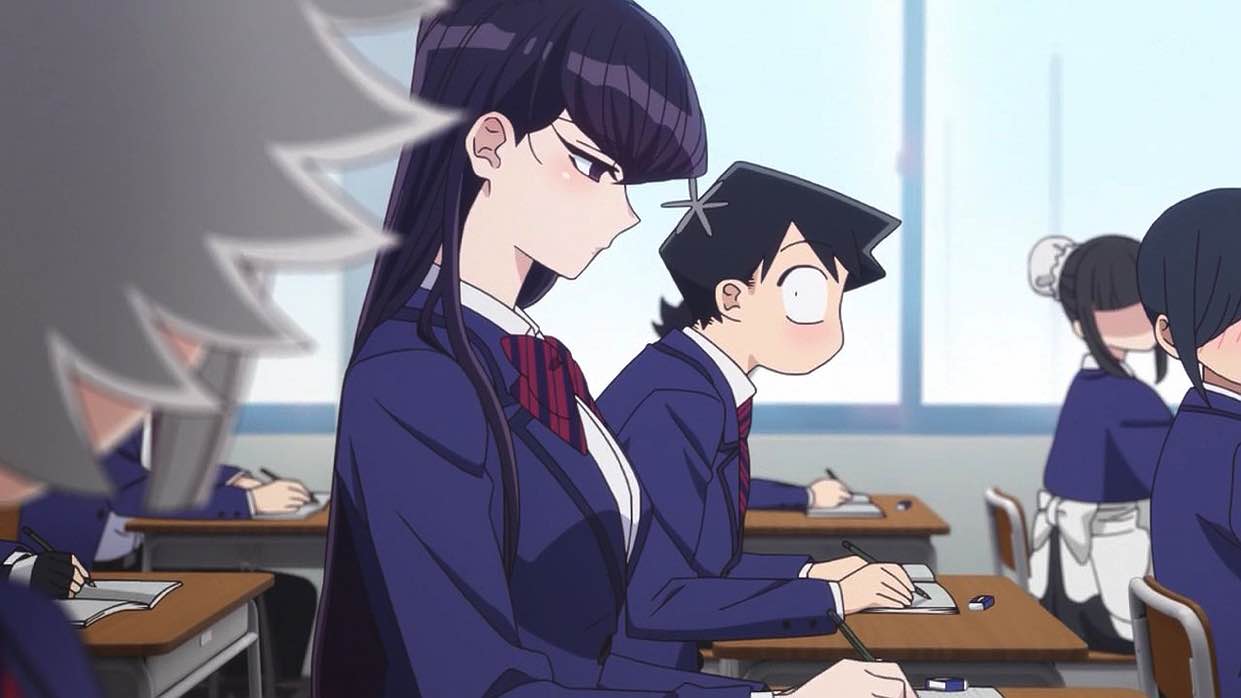
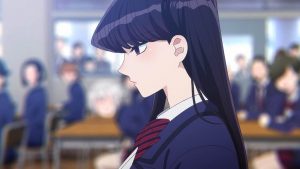
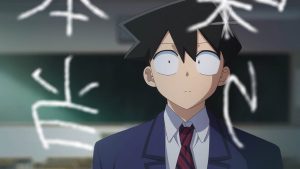
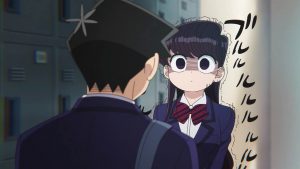
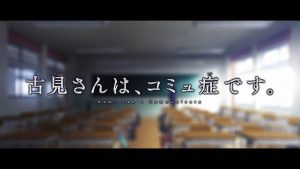


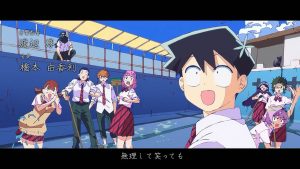

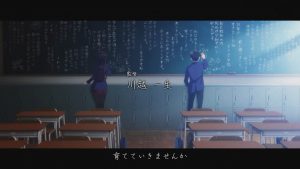
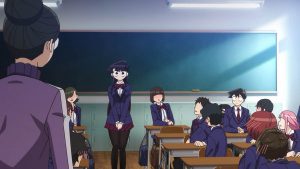
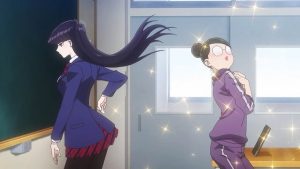
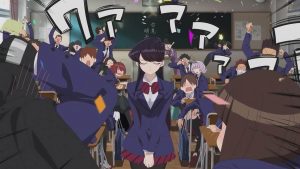



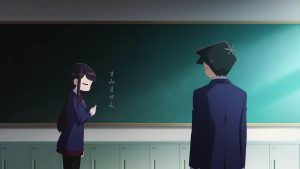
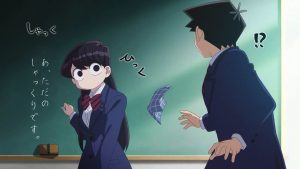
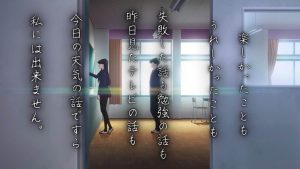
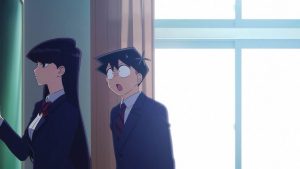
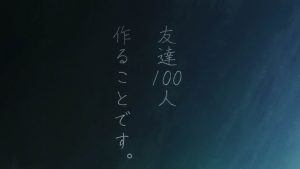
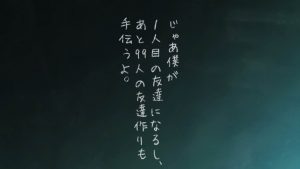
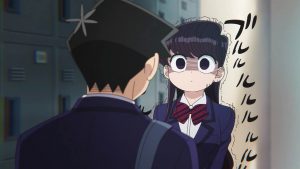
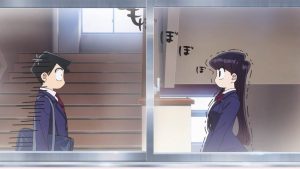
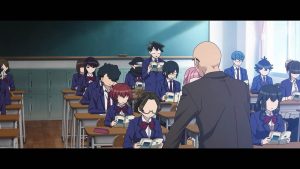
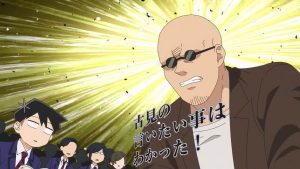
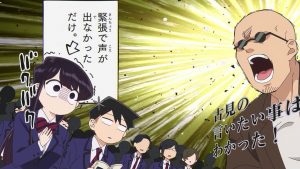
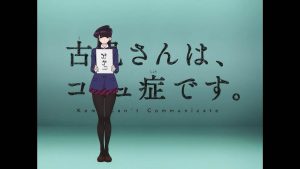
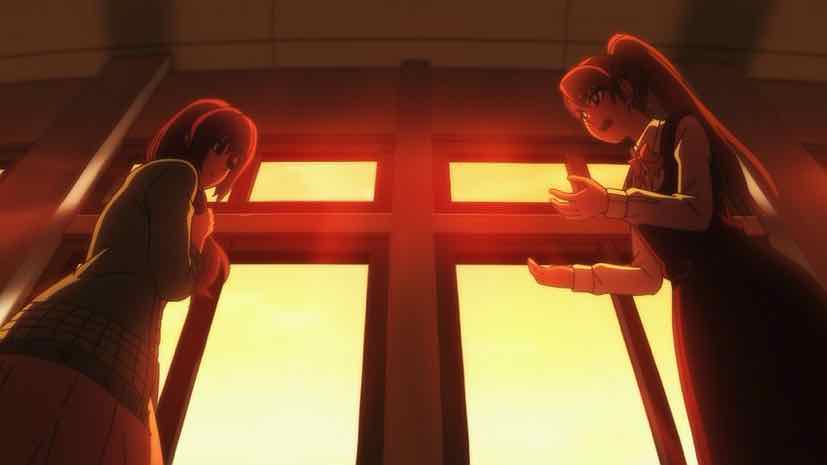
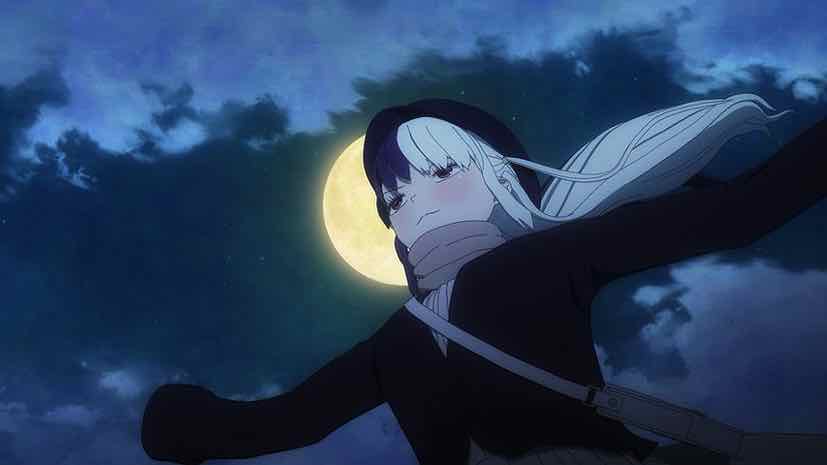
Darrel
October 8, 2021 at 10:29 pmKomi San bears many similarities to Bokuyaiba, though for me at least, the latter is by far the superior series in terms of writing and characterization.
Guardian Enzo
October 8, 2021 at 10:44 pmThat’s a very, very high bar.
Derrick
October 8, 2021 at 10:49 pmKomi manga beginning is tolerable, but later parts are…. weird.
Kim
October 9, 2021 at 12:12 amYes Netflix doesn’t understand how fans consume anime in the West. At least they are starting to air more series weekly so it’s a step in the right direction.
But the fact that other streaming service can air series the same day within hours of Japan but Netflix you have to wait a week or more shows they still don’t really get it.
Guardian Enzo
October 9, 2021 at 12:44 amNope, they don’t. And the sad part is they’re hurting their own product because of it.
Marty
October 9, 2021 at 11:41 amI remember a few years back a fun little series called “Seryuu Shoujo” where this show’s premise seems familiar, but instead of not talking at all she just communicated through poems.
Guardian Enzo
October 9, 2021 at 1:53 pmI semi-blogged it. It was a sweet little half-length show.
AK
November 1, 2021 at 2:03 amJust started Komi, and I haven’t read the manga at all, but I can see your point with some of the plot contrivance concerns. Curious what the land mines you refer to might be, but I’ve only watched a few school comedy anime series like this one, so I might have missed some of the real screwups in that subgenre. My main concern is that the class (and far more strangely, yeah, the teachers) seem so taken with Komi that they’re pretty much obsessively drooling over her. I get she’s supposed to be a knockout and all that, but it feels a little too over the top for me, and the way they treat Tadano over it is fairly rotten.
Then again, it seems like a wacky comedy so far, so maybe I just have to accept that. I’ll keep watching for now. Though I’m still just on episode 2 because I’m watching on Netflix. They’re giving viewers plenty of reason to switch to fansubs so far in my opinion.
Guardian Enzo
November 1, 2021 at 7:00 amThat’s a big issue for me, too. Maybe the biggest.
But if you make it to Episode 4, you’ll know what the land mines are because they pretty much all go off.